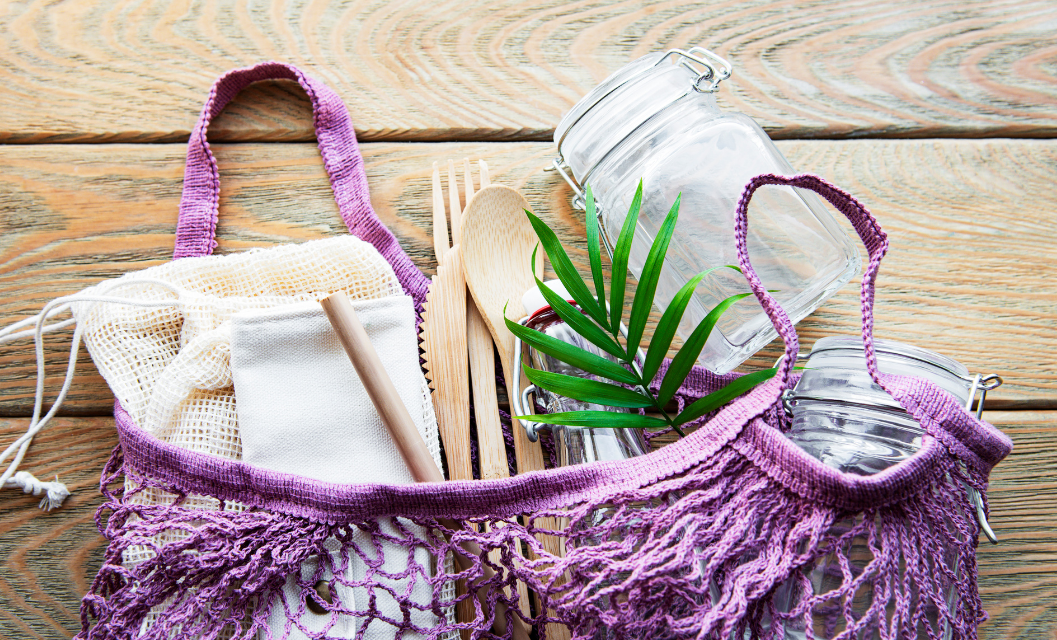There are many ways to reduce the amount of plastic we use in the kitchen. Everyone knows that plastic pollution is a huge issue. People use way more plastic than is necessary, and many items come packaged in plastics that are hard to recycle. Plastic is made from petroleum, and producing it releases greenhouse gases into the atmosphere. Plastic also doesn’t biodegrade easily, meaning most plastic produced still exists (in landfills or the ocean). And when it does biodegrade, it breaks up into smaller pieces that work their way into the food chain.
According to the Plastic Pollution Coalition, plastic can stay in the environment for 2,000 years or longer. That’s why reducing its use in your home is so important. Unfortunately, one place where plastic is common is in the kitchen. Read on to discover simple ways to reduce your use of plastic in the kitchen.
1. Use reusable containers to store food.
Reusable containers allow you to store food for later consumption. In addition, they are more durable than disposable plastic containers, which means that you won’t use and throw away as many containers. In turn, you will reduce the amount of waste going into landfills.
Not all reusable food storage products are created equal. Some may use recycled materials, while others are made with non-toxic materials like stainless steel or glass. Before purchasing any reusable container, you should always check the label to ensure it is free from harmful chemicals, such as BPA (and if it’s made with recycled materials). Then you’ll know exactly what’s in the products you use in your home and kitchen. We love these different glass food containers with bamboo lids!
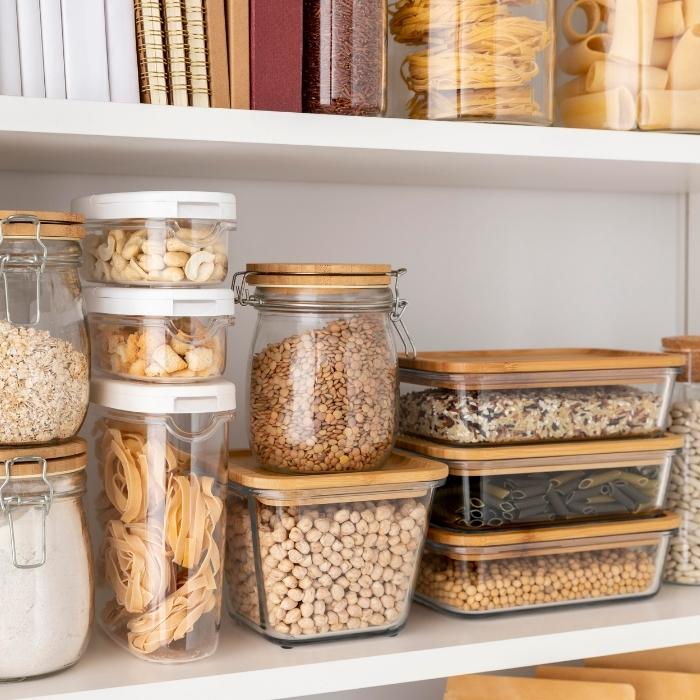
Glass food storage containers are a great replacement for your old plastic ones.
2. Use cloth in the kitchen instead of paper towels.
In the kitchen, cloths for wiping up spills are a necessity. Cotton and microfiber cloths work well for wiping counters and spills (use one for wet and one for dry). For cleaning, you’ll probably want to invest in some sturdier (and bigger) cloths like microfiber cloths. These can be washed in your washing machine, but avoid using fabric softener, which will reduce their efficacy. You can also buy biodegradable dishcloths to use in the kitchen. The key is to avoid using paper towels every time you have a spill or clean-up job. Paper towels fill up landfills and contribute to deforestation.
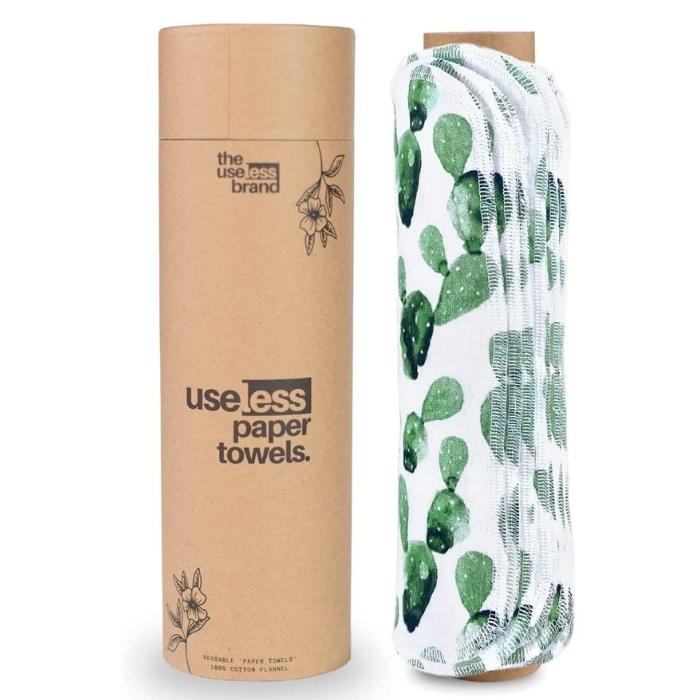
These washable Useless brand paper towels come in various cute prints and are a great way to cut back or eliminate the use of paper towels. | Photo: The Useless Brand
3. When grocery shopping, look for products not packaged in plastic.
When grocery shopping, there are ways to avoid purchasing plastic packaged products. Look for bulk items (like rice, dried beans, and flours). Pause before wrapping your apples in thin, clear plastic bags when shopping for produce. If a purchase seems challenging to make without using plastic, ask yourself if you need it. Are there alternatives you could make at home? Do you have a reusable bag or container that would work?
Although many food packages today contain some form of plastic, not all plastics are created equal. For example, some plastics break down more quickly than others. Some are easier to recycle than others. And some are made from recycled materials, making them better for the environment in a number of ways.
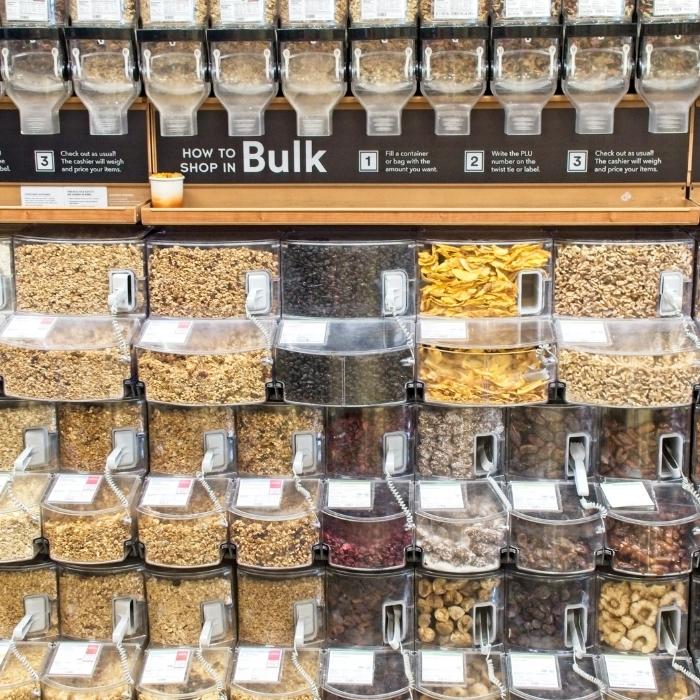
Shop in the bulk section or choose products with the least amount of plastic packaging.
4. Remember your reusable bags for grocery shopping.
Cloth grocery bags can replace plastic bags at the checkout. They are reusable and easy to clean by dropping them in the washer. Wash them often and take them with you when you shop (remembering to take them with you is the hardest part 😊). Keep multiple cloth bags on hand, as they can come in handy for other things besides groceries, like carrying your lunch and holding books. If you buy decorative ones, it’s a fun way to make a fashion statement. Have separate bags for food versus other items. Don’t put food in bags you use to carry other items.
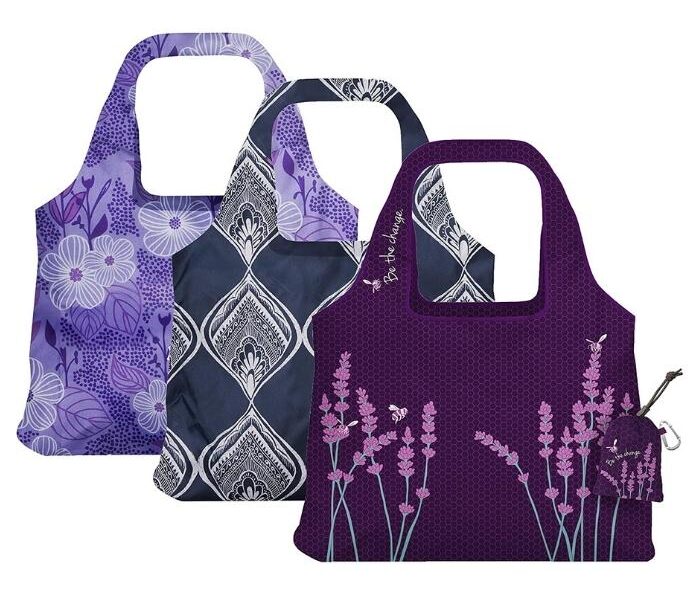
We’ve been using these ChicoBags for many years and love how they’ve held up. | Photo: ChicoBag Company
5. Reuse and recycle takeout containers.
One way to reduce pollution from plastic in the kitchen is to reuse or recycle takeout containers. Everybody loves takeout, and with our busy lives, we often order from our favorite restaurants that are still using plastic containers. Many restaurants now use containers that are made of recyclable or biodegradable materials. These containers can be washed and reused again and again at home. Then when you’re done with them, be sure to recycle them.
Pro Tip: Keep a few of these containers on hand to send food home with your guests, so they don’t take from your personal reusable container stash (since you know you’ll never get them back 😆).
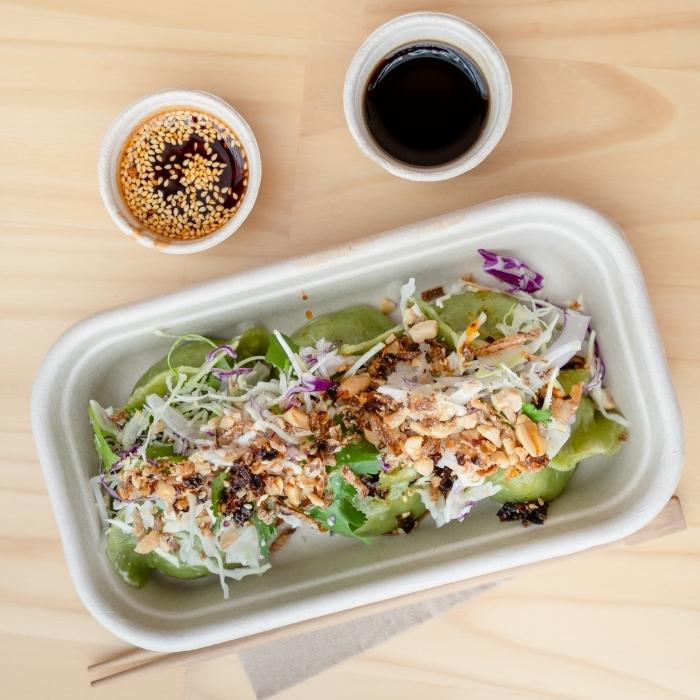
If you do happen to get takeout that still uses plastic, try to reuse it before recycling it.
The Bottom Line
Making small changes in your kitchen can lead to a significant reduction in plastic waste every day. There are many ways to reduce plastic in the kitchen, and we hope that this list has inspired you to make some changes in your own home. By making small changes like using reusable bags and containers or investing in a reusable water bottle or coffee mug, you can help reduce the amount of plastic waste that ends up in landfills each year. Every little bit helps, so start today and see how easy it is to live a more sustainable lifestyle. If everyone made one small change, the cumulative effect would be enormous! If you’re interested in diving deeper into reducing plastics in all parts of your life, check out Beth Terry’s blog post about 100 Steps to a Plastic-Free Life.

